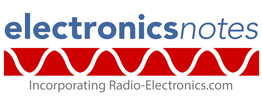Home » Component data » Transistor data » this page
2N3927 Transistor Data
Key transistor data for the 2N3927 RF power transistor including key electrical parameters, pinout, package type and many other key transistor datasheet details.
The 2N3927 is an NPN silicon planar epitaxial overaly transistor in a TO60 metal package with the emitter connected to the case.
The transistor is an RF power transistor intended for VHF transmitting use primarily as an output device, especially in view of its higher power.
The maximum RF output power is specified as being 23 watts at 175 MHz.
Key details and performance parameters for the 2N2926 transistor.
| Transistor parameters & data |
|
|---|---|
| Parameters | Details |
| Transistor type | NPN silicon RF power transistor |
| Package type | TO39 |
| VCBO max (V) | 36 |
| VCEO max (V) | 18 |
| VEBOmax (V) | 4 |
| VCEsat (V) | 1.0V @ I |
| IC max (A) | 1.5 continuous, 4.5 peak |
| TJ Max °C | 200 |
| PTOT W | 11.6 |
| fT min (MHz) | 200 |
| COB | 45pF |
| hfe | |
| IC for hfe | |
| Similar / equivalents | |
Outline:
Pinout:
Explanation of transistor parameters
| Parameter | Explanation |
|---|---|
| VCBO Max | Maximum collector-base voltage with emitter open circuit . |
| VCEO Max | Maximum collector-emitter voltage with base open circuit. |
| VEBO Max | Maximum emitter-base voltage with collector open circuit. |
| VCEsat (included where applicable) | The voltage drop across the collector-emitter when the transistor is fully saturated (acting as a closed switch). |
| IC Max | Maximum collector current. |
| Parameter | Explanation |
|---|---|
| TJ | Maximum junction temperature. |
| PTOT Max | Maximum device dissipation normally in free air at 25°C unless other conditions indicated. |
| fT Min | Minimum cutoff frequency at which the current gain in a common emitter circuit falls to unity. |
| COB Max | Maximum collector capacitane, normally measured with emitter open circuit. |
| hFE | DC current gain for HFE at IC. [Note hfe is the small signal gain and although this may be slightly different, the transistor current gain will vary considerably from ne transistor to the next of the same type.] |
| PTOT Max | Maximum device dissipation normally in free air at 25°C unless other conditions indicated. |
These are the main transistor parameters that have been included in our list. There are others, but these help quantify the main elements of the performance of the transistor.
Please note, that the data given is the best estimate we can give within a tabulated summary of this nature. Parameters also vary between manufacturers. Electronics Notes cannot accept any responsibility for errors, inaccuracies, etc, although we do endevaour to ensure the data is as accurate as possible.
Notes and supplementary information
There are a few points to note when using this transistor.
• Availability & sources
The 2N3927 is available from a number of stockists and electronic component distributors many of which are given in the table below.
2N3927 Component Distributor, Stock and Pricing
• Heatsink
This transistor needs to be bolted to its heatsink to achieve its full power capability. Note that the emitter is connected to the case, unlike many TO39 packages where the collector is connected to the case.
There are also warnings that the leads should not be bent. It is likely that this could rupture the integrity of the encapsulation.
• Hazardous substances
The device incorporates beryllium oxide and the dust from this is toxic. While the device is entirely safe provided the BeO disc is not damaged, great care should be taken to ensure that it remains fully intact.
• RF performance
the 2N3927 is a high power RF transistor and it is capable of providing 12 watts output for an input RF level of 4 watts at 175 MHz.
This test was undertaken using a VCE of 13.5 volts.
 Written by Ian Poole .
Written by Ian Poole .
Experienced electronics engineer and author.
Return to Component Data menu . . .




